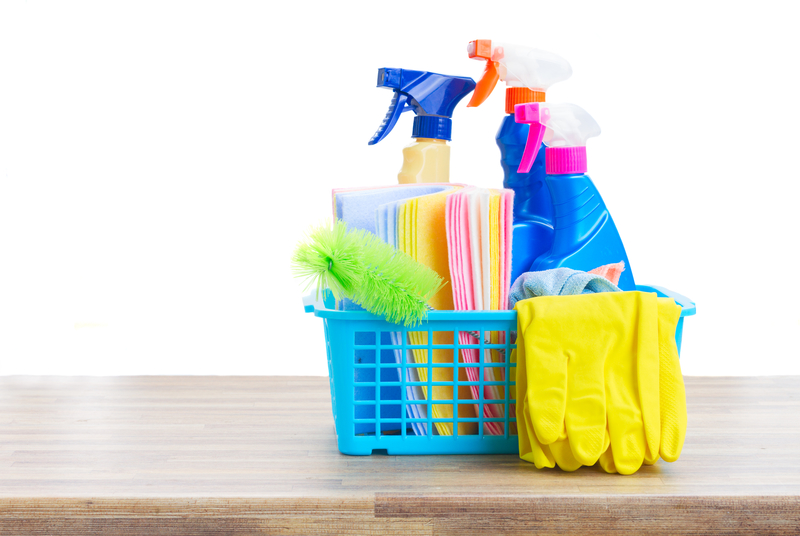Recognizing the Demand for Thoroughly Decontaminating and Sanitizing Frequently Touched Surfaces in High-Traffic Areas
In the world of public health and safety, the meticulous disinfection and sanitization of often touched surfaces in high-traffic locations stand as paramount measures in stopping the spread of dangerous pathogens. The importance of this practice extends far beyond simple sanitation, delving right into the realm of disease prevention and area health. By checking out the various elements of surface area sanitation, from the threats related to disregarding cleaning procedures to the efficient techniques that can be used, a clearer understanding emerges of the vital function these methods play in safeguarding public health. As we browse this discussion, it becomes apparent that the ramifications of extensive surface area disinfection resound not only within the confines of a particular setting however additionally resonate on a wider scale, influencing the health and wellness of individuals across diverse public setups.
Relevance of Surface Area Disinfection
Emphasizing the comprehensive disinfection of high-traffic surface areas is essential in maintaining a sanitary environment and preventing the spread of unsafe virus. High-touch surface areas such as door takes care of, light switches, lift buttons, and counter tops act as breeding grounds for viruses and bacteria. Routine sanitation of these surface areas is essential to decrease the threat of contamination and transmission of health problems.
By executing a robust disinfection protocol, services and institutions can create a more secure environment for employees, consumers, and site visitors. Proper surface disinfection not just reduces the spread of contagious diseases however likewise instills self-confidence in the tidiness and safety of the premises. This proactive approach shows a dedication to health and health, which is particularly crucial in high-traffic areas where the likelihood of direct exposure to virus is increased.
Furthermore, surface disinfection plays a critical role in general infection control strategies. Incorporated with hand hygiene techniques, wearing masks, and preserving physical distancing, extensive disinfection of high-touch surface areas develops a thorough protection against the transmission of hazardous microbes. Prioritizing surface sanitation is an important element of an all natural method to wellness and security in shared spaces.
Threats of Overlooking Cleaning Practices
Neglecting complete sanitation of high-traffic surface areas dramatically heightens the risk of viral and bacterial contamination, posing a severe threat to the health and wellness of individuals often visiting these areas. Failure to implement appropriate cleaning methods can result in the accumulation and spread of hazardous pathogens, including infections and germs, on regularly touched surfaces such as doorknobs, handrails, elevator buttons, and countertops.

Furthermore, disregarding the significance of complete cleansing not only jeopardizes the health of people but likewise weakens initiatives to maintain a sanitary and tidy atmosphere. It is important to identify the significance of proper disinfection methods in avoiding the spread of infections and safeguarding public wellness.
Efficient Sanitation Methods
To keep ideal sanitation and decrease the danger of contamination on high-traffic surfaces, using efficient disinfection techniques is necessary. Among the most usual and effective disinfection methods is using chemical anti-bacterials. These products can vary in stamina and composition, with some targeting particular virus like microorganisms or infections. It is important to follow the manufacturer's directions for appropriate dilution, contact time, and ventilation when making use of chemical anti-bacterials to ensure their efficiency - Clear Out Any Clutter.
An additional reliable technique is the usage of UV-C light. UV-C light has been revealed to be reliable in killing a large array of microbes by disrupting their DNA structure, thus stopping them from replicating. It is important to utilize UV-C light appropriately, making sure that the right strength and exposure time are used to accomplish the desired sanitation results.
Furthermore, using heavy steam cleansing as a sanitation technique can be highly effective, especially on surfaces that are heat-resistant. Steam can pass through permeable surfaces and eliminate bacteria, infections, and various other pathogens successfully. When utilizing heavy steam cleaning, it is very important to make certain that the surface area gets to the needed temperature for a sufficient quantity of time to guarantee correct disinfection.
Impact on Public Health
The maintenance of high standards of tidiness and disinfection on high-traffic surface areas plays an important duty in safeguarding public health and wellness. Regularly touched surface areas in areas with high tramp, such as doorknobs, hand rails, lift switches, and toilet web facilities, serve as reproducing premises for harmful virus.
Efficient sanitation techniques not only protect individuals from dropping unwell but additionally add to the general well-being of culture. Public health authorities highlight the relevance of preserving tidy settings to avoid episodes and include the spread of illnesses. In high-traffic areas like airports, schools, hospitals, and mass transit systems, the impact of strenuous sanitation steps can not be understated. Prioritizing the sanitization of frequently touched surface areas is a positive strategy to advertising public wellness and improving the safety of people in common areas.
Applying Routine Cleaning Up Protocols
Quickly setting up and sticking to a consistent schedule of cleaning methods is extremely important for keeping the tidiness and safety of high-traffic surfaces. Routine cleansing protocols are necessary in avoiding the build-up of germs and virus on often touched surfaces, specifically in areas with high foot web traffic. By applying an organized strategy to cleaning, companies can properly minimize the risk of illness transmission and develop a healthier atmosphere for staff members, consumers, and the public.
To establish an effective cleansing routine, it is essential to determine high-traffic locations that need frequent attention. These areas might include doorknobs, handrails, elevator buttons, washroom facilities, and shared tools. Applying a regular cleaning program that targets these surface areas multiple times a day can dramatically decrease the spread of dangerous microorganisms and infections.
Furthermore, making use of suitable cleaning agents and anti-bacterials is vital to guaranteeing that surfaces are completely sterilized. Regular training of cleaning staff on proper cleaning strategies and the importance of adherence to the cleansing timetable is additionally essential in keeping a hygienic atmosphere. By focusing on regular cleaning methods, companies can advertise the health and wellness and health of people that engage with these high-traffic surfaces.

Verdict
Finally, it is important to prioritize complete sanitation and sanitization of regularly touched surface areas in high-traffic locations to prevent the spread of harmful pathogens and maintain public health. Overlooking proper cleaning practices can enhance the risk of contamination and transmission of diseases. By implementing regular cleansing methods and making use of reliable sanitation approaches, we can produce a much safer environment for everyone (defrosted and cleaned every few months). It is crucial to news acknowledge the importance of maintaining tidy surface areas in high-traffic areas to guarantee the well-being of the area.
In the realm of public wellness and safety, the thorough disinfection and sanitization of frequently touched surface areas in high-traffic areas stand as vital steps in protecting against the spread of dangerous pathogens. By checking out the various elements of surface sanitation, from the risks connected with neglecting cleansing protocols to the efficient approaches that can be utilized, a more clear understanding emerges of the essential function these methods play in guarding public health.Additionally, employing steam cleansing as a sanitation method can be extremely reliable, specifically on surface areas that are heat-resistant. When making use of steam cleansing, it is crucial to make sure that the surface area reaches the required temperature for an adequate amount of time to look at more info assure correct sanitation.
In conclusion, it is critical to focus on thorough disinfection and sanitization of often touched surface areas in high-traffic locations to stop the spread of damaging virus and maintain public wellness.